Research Article Open Access
Effect of Serially Diluted Drug Digitalis purpurea on Modulation of Anesthetized Consciousness of Indian Bufomelanostictus
| Anup Sharma1* and Bulbul Purkait2 | |
| 1Indian Institute of Technology, Kharagpur, India | |
| 2Department of Biochemistry, Midnapur Medical College and Hospital, Midnapore, India | |
| Corresponding Author : | Anupsharma Indian Institute of Technology Kharagpur -721302, India Tel: 919434096543 E-mail: sharma_anup@yahoo.com |
| Received June 08, 2013; Accepted August 14, 2013; Published August 20, 2013 | |
| Citation: Sharma A, Purkait B (2013) Effect of Serially Diluted Drug Digitalis purpurea on Modulation of Anesthetized Consciousness of Indian Bufomelanostictus. J Homeop Ayurv Med 2:132. doi: 10.4172/2167-1206.1000132 | |
| Copyright: © 2013 Sharma A, et al. This is an open-access article distributed under the terms of the Creative Commons Attribution License, which permits unrestricted use, distribution, and reproduction in any medium, provided the original author and source are credited. | |
Visit for more related articles at Journal of Traditional Medicine & Clinical Naturopathy
Abstract
Concept prevails amongst believers that serially diluted drugs do not produce any side effect. The modus operandi of the serially diluted drugs is through neural network. The practitioners of different systems of medicine with paradigmatic differences use the same drug substance in different dilution to treat patients with contrary clinical conditions, Digitalis purpurea is one such drug. The present work describes the effect of ultra-diluted drug Digitalis purpurea and Digoxin on modulation of Diethyl ether induced anesthesia in Indian Bufomelanostictus. Diethyl ether and rectified spirit (also used as diluent for ultra-dilution) are used as controls in this experimental work. In this preliminary study, it is found that the reflex and anesthetic action of Digitalis purpurea 200 is similar to rectified spirit probably because of the simple dilution of the active ingredient. Digitalis purpurea 30 was found to be more effective than rectified spirit. Digitalis purpurea 30 produced the longest period of anesthesia while Digoxin reduced duration of anesthesia. Both Digitalis purpurea 6 and Rectified spirit were effective for almost same duration. The ultra-diluted drug samples and digoxin were further analyzed by Cyclic Voltammetry and Fluorescence spectroscopy which establishes the cause and effect relationship.
| Keywords |
| Serial dilution; Anesthesia; Unconsciousness; Reflex; Fluorescence; Cyclic voltammetry |
| Abbreviations |
| CV: Cyclic Voltammetry; DP: Digitalis purpurea; GC: Glassy Carbon; IBM: Indian Bufomelanostictus; Rec-Spirit: Rectified Spirit |
| Introduction |
| Digitalis purpurea (DP) had been used since 1785 by Erasmus Darwin and William Withering for dropsy, and pulmonary consumption [1]. Hahnemann used it around 1803. Practitioners of prevalent system of medicines used it for various purposes as like beautification, poison arrow (BC 1500), arrhythmia and many other diseases. DP has been used, in varying concentration / dilution by practitioners of different systems of medicine with paradigmatic differences to treat the patients for clinical conditions expressed in contrary to each other. Digoxin (Figure 1) the purified derivative of DP is used in modern medicine to treat patients with increased cardiac rate. On the contrary in homeopathic system DP is used in ultra-dilution to treat patients with decreased cardiac rate [2]. Such uses of medicines as Digitalis have given birth to inter/intra systems conflict affecting pharmacological standard and safety. These were the motivations to carry out a systematic study of the effect of serially diluted DP and Digoxin which is aderivative of DP used in allopathic system of medicine [3]. |
| Out of about thirty known organic compounds that DP contains predominantly 5-7 are medicinally active components such as digoxin, digitoxigenin, digoxigenin and saponins. Observations related to response obtained from serially diluted drugs [4-7] motivated us to find out the competence of Ultra-diluted drug DP to alter neurological signals in susceptible animal IBM. Humans and mammals were known to be susceptible to Digitalis. However, their effects on other species such as amphibians (specifically IBM) have not been reported. Digitalislike poisoning has been reported with the skin-extract of IBM [8]. DP, even in serial dilutions, is known to have produced unconsciousness, fainting and confusion in humans [2]. |
| Anything more dilute than micro volume (10-6) i.e. as a concentration of one micro-liter or micro-gram of solute in one liter of solvent is considered as ‘ultra-diluted’. The saturated extractof DP in rectified spirit -water mixture and its serial dilutions prepared as per India Homeopathic Pharmacopoeia, which are available commercially, were used in the experiment. |
| Diethyl ether was used as General anesthetic agent in order to induce unconsciousness in IBM. Diethyl ether, which has high water and lipid solubility, provides only mild euphoria but excellent anesthesia. It may produce unconsciousness, analgesia, amnesia, immobility and hemodynamicresponses (in response to noxious stimulation). Known toxicological effect [9] of Diethyl ether at various concentrations (between 71,600 ppm and 192,500 ppm ethyl ether by volume) on animals like monkeys, rabbits, mice,ratshave been described by The National Institute for Occupational Safety and Health (NIOSH), Centers for Disease Control and Prevention. |
| The molecular mechanisms related to the brain structure and circuitry involved in the anesthetic loss of consciousness is unknown in spite of about more than a century long research by Meyer (1899) and Overton (1901). Diethyl ether inhibits alcohol dehydrogenase, and thus slows down alcohol metabolism. Diethyl ether can act as a hydrogen bond acceptor but not a donor [10]. |
| Anesthetic Diethyl ether and rectified spirit used as diluent for preparation of ultra-diluted DP were used as controls. |
| IBM was chosen for the experiment, on the basis of preliminary studies conducted in our laboratory, suggesting that IBM are susceptible to DP, rectified spirit, Inj. Digoxin, and ether. |
| Fluorescence spectroscopy and cyclic voltammetry were carried out on the experimental drug samples to get the possible cause and effect relationship. |
| Methodology |
| The institutional ethical committee for research on humans and animals in Indian Institute of Technology, Kharagpur, India (IEC), granted necessary clearance to carry out the research and along with AYUSH (Government of India) provided the infrastructure for the purpose. A veterinary surgeon was also engaged to give guidance on all the aspects of animal facility, care, and animal research. Dedicated electrical earthing was installed in the animal house and in the entire laboratory. |
| Diethyl Ether (C4H10 O, M=74.12 g/mol; 1l=0.71 kg) manufactured by Merck was used for inducing inhalation anesthesia. Rectified Spirit (aqueous ethanol 91.4%) was acquired from Bengal Chemicals and Pharmaceuticals, India. The solvent/diluent was manufactured without any other inclusions such as acetone. In all experimental procedures, the solvent used (even for rinsing of glassware etc.) was ethanol. A thorough cleansing and rinsing of glassware, trays, cuvette, hands etc., were done with ethanol only, before and immediately after each reading. Homeopathic drugs Digitalis purpurea Q or θ (Batch no. 6725 of September 2005), Digitalis purpurea 6, Digitalis purpurea 30, and Digitalis purpurea 200, (all Batch of June 2005) and the solvent were procured from the authorized manufacturer M/s Hahnemann Publishing Company, Kolkata, India. |
| Inj. Digoxin, 25 mg/ml, (Batch of June 2005) manufactured by Samarth Pharma was used. Glass double distilled water was used in the experiment. |
| Animals, procured from authorized vendors, were screened for general health, injury marks, and heart conditions using highly sensitive cardio phonic stethoscope. Acclimatization of IBM was carried out for about 10 days in an animal house. Sufficient water and recommended feed, not known to have medicinal influence, was provided. They were made familiar to human presence and contact, cotton and electrodes. Experimental animals- IBM were washed with water to reduce skin impedance and remove interfering substance like hellebrigenin, secretions, excretions, dust etc. Inhalation anesthesia was given to the animal till complete flaccidity of muscle of hind limbs and loss of reflexes to mechanical stimuli were achieved. Specially designed Ag/AgCl electrodes to suit the limbs of the animals were attached to recognize digital signals on slightest muscular movement of the animal. Total duration of anesthesia / absence of reflex were noticed. To avoid anything like bias all the experiments were randomly carried out by three experts / trained personnel. |
| Two batches of animals were taken as control. One batch (n= 25) was treated with diethyl ether only. Second batch of control (n=27) was treated with diethyl ether followed by rectified spirit, which was used as diluent in the experimental homeopathic drugs. Deep ether anesthesia was induced in 10 IBMs. Rest of the anesthetized animals were individually treated randomly with intraperitoneal injection, using Insulin syringes, with either 0.5 ml of Digitalis purpurea θ (n=21) or Digitalis purpurea 6 (n=33) or Digitalis purpurea 30 (n=21) or Digitalis purpurea200 (n=25) or Digoxin (n=14). Since the effect of Digoxinis well documented, restricted numbers of animals were used for observations after administration of Digoxin. Out of these, two animals died after giving rectified spirit, one animal died after Digitalis purpurea θ, one animal died after Digitalis purpurea 30, four animals died after giving deep anesthesia, two animals died after giving Digoxin. Since the death rate of animals was very high with deep anesthesia, experiment with deep ether anesthesia was discontinued. Average duration of anesthesia produced by the drugs in each IBM was recorded (Figure 2). |
| Statistical basis for the sample size was determined by using various software, which include, SPSS 12, Excel, SAS, and SQL. Opinion of masters of statistics, bio-statistics, veterinarians, epidemiologist, mathematicians, planners, and designers, researchers was sought in this context. ANOVA was done to compare the duration of anesthesia produced by each drug. Since there were problems of retrieval of some data, the sample size also got truncated. The outliers were removed and some data that the program could not correctly interpret were also removed as if they never existed. |
| Cyclic voltammetry |
| Electrochemical measurements were performed using twocompartment three-electrode cell with a polycrystalline Au working electrode (2 mm diameter, BAS, USA), a Pt wire auxiliary electrode and Ag/AgCl (3 M NaCl) reference electrode. Cyclic voltammograms were recorded using a computer controlled CHI643B electrochemical analyzer attached with a Faraday cage/picoampere booster (CH Instruments, Austin, TX). The geometrical surface area of 0.031 cm2 was cleaned electrochemically by cycling the potential between - 0.2 and 1.5 V in 0.25 M H2SO4 at the scan rate of 10 V/s for~10 min until the characteristic cyclic voltammogram for a clean Au electrode was obtained for use as working electrode. The GC electrode was used directly after sonication. |
| The voltammograms using Digitalis purpurea θ, 6, 12, 30, and 200 dilutions and Digoxin were obtained using bare Au electrodes and GC electrodes at pH 11, and scan rate of 100mV/s (Figures 3-5). Although voltammetric measurements of saturated extracts of the drug DP θ were carried out, for constraints attempt to detect the upper limit could not be carried out. |
| Fluorescence spectroscopy |
| The absorption and fluorescence spectra were measured using a Shimadzu (model no: UV-1601) spectrophotometer and a Spex- Fluorolog-3 (model no.FL3-11) spectrofluorimeter. The spectra with possible interpretation and analysis obtained for different dilutions of Digitalis purpurea θ, 6, 30, and 200 are given herein below along with the obtained relevant emission spectra shown in (Figure 6). Fluorescence spectroscopy was carried out to detect the presence of Digitalis purpurea and Digoxin-like compounds in serial ultra-dilutions for comparison of the components of Digitalis purpurea, which is having intrinsic fluorescence. The fluorescence is likely to be due to α, β-unsaturated lactone present in the compound. The compound is known to be hydrophobic in nature, but the sugar moiety attached to the compound changes its solubility. Fluorimetric method is unsuitable due to inner filter effect in the solutions at saturated concentrations. |
| Result and Discussion |
| Time taken by the animals to get anesthetized was variable.Time taken to inject the drug in an animal immediately after anesthesia was about less than half a minute. Graphical representation of result is given in (Figure 2). Comparisons of mean duration of anesthesia, in minutes, are shown in (Table 1). Response of Digoxin is in accordance with its known ability to shorten duration of anesthesia. Rectified spirit and Diethyl ether are proven anesthetics. There may be a combined effect of the DP and the alcohol that increases the anesthetic effect. With Digoxin alone the duration of anesthesia reduces. It is also observed that DP θ, which contains concentrated proportion of medicinally active ingredients, also reduces the duration of anesthesia (Figure 2). |
| Ether as a single chemical substance can achieve all the actions considered important for general anesthesia. By themselves, there are many other ways of correlating anesthetic effects; limitation of the work does not permit elaboration of the same. |
| Any relationship to the processes involving the CNS, which lead to unconsciousness, remains unknown. One of the possible explanations given on the matter is by the generalized Lipid hypothesis. General anesthetics do not totally inhibit neuronal functions while abolishing consciousness. It has also been suggested that the site of anesthetic inhibition of motor response may be in the spinal cord [11]. The consciousness aspect related to subtypes of receptor, voltage-gated ion channels, and the intercellular connection of central nervous system is still unknown. Manfred E Wolf reported “General anesthetic-induced inhibition of voltage-gated calcium channel is not only important in the pre-synaptic actions of anesthetics, but also provides a possible explanation for general anesthetic-induced myocardial depression” [12]. The findings related to changes in heart conduction produced by Digoxin, and DP in various concentrations has been published [6]. |
| Pair wise comparison of drug effectiveness, in producing period of anesthesia with respect to rectified spirit and Diethyl ether is given in (Tables 2 and 3). Digitalis purpurea 30 has produced the longest period of anesthesia and inhibition of reflex actions in IBM, while Digoxinhas reduced duration of anesthesia, and shortened duration of inhibition of reflex action. Both Digitalis purpurea 6 and Rectified spirit produced the same effectiveness in producing duration of anesthesia. Rectified spirit is more effective than DP θ. Digitalis purpurea 200 is similar to Rectified spirit in duration of anesthetic action and inhibition of action reflex. |
| The same network of sympathetic and parasympathetic nerves that produces effect on heart also seemingly modulates unconsciousness and suppression of reflex action. These ultra-diluted drugs increase the duration of unconsciousness, and suppress reflex action, but the neural correlates of these are unknown [6]. The consciousness aspect is still unknown with regard to subtypes of receptor, and voltage gated ion channels, and the intercellular connection of central nervous system. However, the most important question regarding the modus operandi of the ultra-diluted drugs remains unresolved. This work may be a small step forward to open more opportunities for further research. |
| Cyclic voltammetry |
| (Figure 3) shows voltammetric (gold electrode) pattern of Digoxin and DP 200 are similar for which oxidation potential is at 0.32 V to 0.35 V. Though (a) and (b) have similar Voltammetric pattern but current intensity is higher in Digoxin (a) which does not contain ethanol at all. But in DP 200, Digoxin moiety is one the active ingredients but lower current intensity may be due to the dilution effect. (b) Is the Voltammetric response for the oxidation of ethanol and this peak pattern is similar to the literature data for ethanol oxidation by gold electrode. Basically DP 200 is nothing but the serial dilution of the plant extract in ethanol. For the clarification of the presence of digoxin moiety in plant extract, we have measured the Cyclic Voltammetry of DP 200 and only ethanol where concentration of ethanol is same (91.4%). The observed higher current in DP 200 compared to the ethanol indicates digoxin moiety is expected to be present in the plant extract. |
| The voltammograms using Digitalis purpurea θ, 6, 12, 30, and 200 dilutions and Digoxin were obtained using bare Au Electrodes and GC at pH 11, and scan rate of 100mV/s (Figure 4 and 5) show characteristic difference. Corresponding black voltammograms are for bare Au / GC electrodes. For constraints attempt to detect the upper limit could not be carried out, although voltammetric measurements using saturated extracts of the drug were carried out. |
| These voltammograms clearly indicate the presence of redox pair showing distinct peak potentials, with gold (Au) electrode ~0.25 and 0.35 volt, while bare Au electrode showed presence of redox pair at ~0.35 and 0.45 volt. The same redox pair is seen with the pure medicinally active derivative Digoxin, which does not contain ethanol at all. Perfect reversible cyclic-voltammograms are obtained with the Au electrode. However, for glassy carbon (GC) and bare GC electrodes, reversible cyclic plots are not observed. Interestingly, for both Au and bare Au cases we get the same potential separation for the cathodic and anodic peaks. The CV indicates presence of the peak at the same level as that of purest Digitalis purpurea medicinal derivative Digoxin and is ascertainable in serial ultra-dilutions. This indicates presence of Digoxin-like substance in the ultra-diluted samples of the drug. As the structure in (Figure 1) indicates the five-member moiety containing α,β-unsaturated lactone is responsible for accepting one electron during reduction in the CV. |
| Emission spectra |
| The spectra with possible interpretation and analysis obtained for different dilutions of Digitalis purpurea θ, 6, 30, and 200 are given herein below along with the obtained relevant emission spectra shown in (Figure 6). Fluorescence spectroscopy was carried out to detect the presence of Digitalis purpurea and Digoxin-like compounds in serial ultra-dilutions for comparison of the components of Digitalis purpurea, which is having intrinsic fluorescence. It has been observed that U-V absorption maxima for the same substance are at 255 nm. It is in corroboration to the finding of the research group [5,13]. |
| The fluorescence spectrum of the compound was taken at different dilution in aqueous ethanol. Fluorimetric method is unsuitable due to inner filter effect in the solutions at saturated concentrations. In all the emission studies, the samples were excited at 255 nm. The emission spectra of different dilutions are shown as C, D, E, and purest medicinally active ingredient Digoxin is shown as B in (Figure 6). These Fluorescence spectra revealed that Digoxincomponent shows a structure less fluorescence with emission maxima at 318 nm with a relative intensity of 4.5×106. The serial sequential dilution of the natural product at 6c, 30c and 200c levels of dilution show emission maxima at 318 nm rather than the structured emission as observed with purest digitalis. The emission spectra of Digitalis purpurea 6 is structure less emission found to be modified with a semi-structured emission with maxima at 357 nm and 374 nm and further a shoulder at about 318 nm remained which could be due to the original Digoxin. The appearance of additional bands at 357 and 374 nm may be ascribed to loss of self-quenching or dissociation of component substance due to serial dilution and these bands showed an increase in intensity with subsequent dilutions up to a certain level. |
| Conclusion |
| The reflex and anesthetic action of Digitalis purpurea 200 is similar to Rectified spirit probably because of the simple dilution of the active ingredient. Digitalis purpurea 30 was found to be more effective than Rectified spirit. Digitalis purpurea 30 produced the longest period of anesthesia while Digoxin reduced duration of anesthesia. Both Digitalis purpurea 6 and Rectified spirit are effective for almost same duration. It seems to be the probable effect of segregation, purification, and isolation by serial dilution of the drug Digitalis purpurea. To conclude it may be said that probably ethanol soluble ultra-diluted drugs may modulate anesthesia, and it requires further experimentation. |
| The CV and Analytical Fluorimetry indicate presence of the peak at the same level as that of the purest Digitalis purpurea medicinal derivative Digoxin and are ascertainable in serial ultra-dilutions. This indicates presence of Digoxin-like substance in the ultra-diluted samples of the drug. CV and Analytical Fluorimetry also reveal that the process of serial ultra-dilution of natural organic-drugs involves phenomenon like partial segregations and purification |
| Cyclic Voltammetry (CV) and Analytical Fluorimetry (optical spectroscopy) both can be used to identify Digitalis purpurea and its derivatives, even in ultra-diluted solutions. |
| Limitations of The Study |
| It is laboratory based Randomized Control Trial. This study has several limitations. There are some other components, which are naturally present in Digitalis purpurea and show different activities. Inclusion could not be made of the presence of other predictors of anesthesia and variability analysis. More than one statistical method of interpretation that represents this work has been included. Other than anesthesia studies of associated parameters are also included. Clinical conditions are too many, only a few examples could be cited in the text. For confines of the article non-parametrical statistical analysis was not conducted. Medicinally active ingredients of ultra-diluted drugs are difficult to detect analytically in laboratory. Ultra-diluted drug is not detectable in biological specimen, bringing limits to the design of the research. Commercially available medicines were only tried. Inference could be drawn only about the quality of the commercially manufactured drug. Studies conducted on albino rats, rabbits to monitor the effect of ultra-diluted drugs in producing anesthesia, is not included in this paper as it is noticed that anesthetic effect, Heart rate, heart conduction of these animals are not comparable with humans, in spite of their genetic proximity. The amount of knowledge relating to nervous system, nerve conduction, anesthesia, and drugs is so vast that it is not possible to encompass the same within the confines of the present work. |
| The drug DP θ was not diluted for improved physicochemical analytical studies; such dilutions are not found in commercial circulation. |
| Future scope |
| This study opens up a vast research area for exploration of noninvasive in vivo study of ultra-diluted drugs. The results obtained even in dilutions have characteristic findings, and the techniques/ methodologies cited in this dissertation may be used as a tool for identification, quality assessment, toxicological analysis, and pointof- care analysis for other homeopathic drugs. Further study for physicochemical analysis of mother tinctures (θ) may be conducted. These findings also open up the scope for assessment of clinical toxicity that may be produced by the drugs in dilutions. These methods can be used for characterization / standardization of sensitive ultra-diluted organic substances. It remains to be seen if there appears any change of configuration, dilution, and effectiveness caused by ultra-dilution and agitation, which may be correlated by CV and fluorescence data. Further analysis of fluorophores and CV of the drug DP and Digoxin may provide an in-depth understanding of the components that can bring changes in biological system. It is envisaged that fine-tuning of the anesthetized unconsciousness may become possible without any side effect of drugs like Digitalis or similar ones. |
| Conflict of Interests |
| No known conflict of interests exists. |
| Acknowledgement |
| Thankfully acknowledge support extended by Prof C. R. Raj, Prof NilmoniSarkar, Prof M. Halder, Prof. A. Roy, Prof. I. Chakraborty, Dr. Ramendra Sundar Dey, Dr. Sudip Chakraborty, Dr. A. B. Bera, and Dr. Sudip Chakraborty, Dr. B. Bhattacharya, IIT Kharagpur, AYUSH. |
References
|
Tables and Figures at a glance
| Table 1 | Table 2 | Table 3 |
Figures at a glance
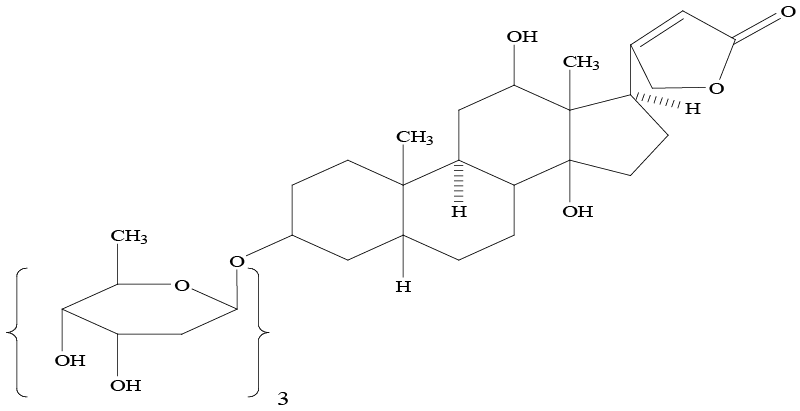 |
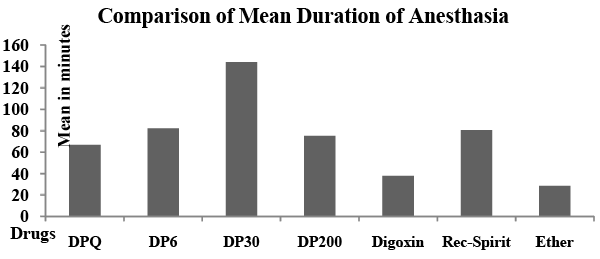 |
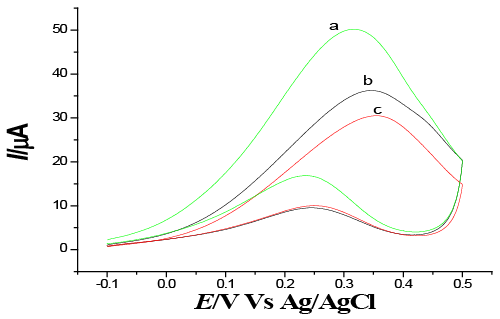 |
| Figure 1 | Figure 2 | Figure 3 |
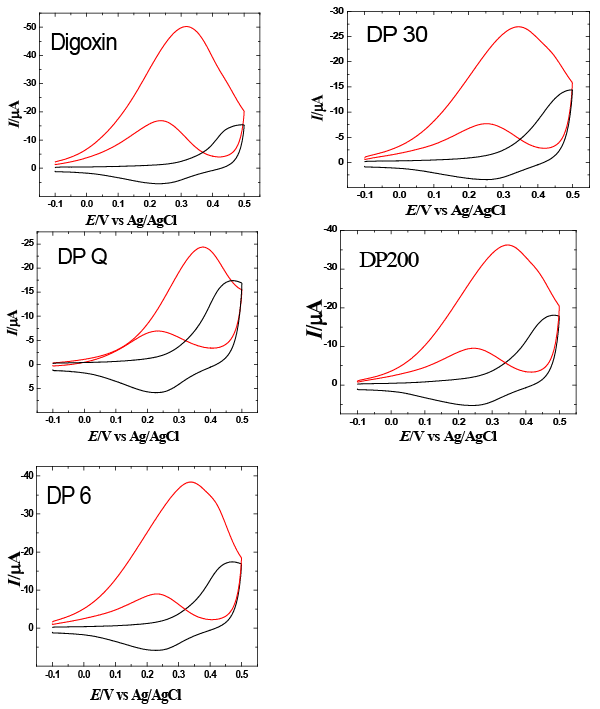 |
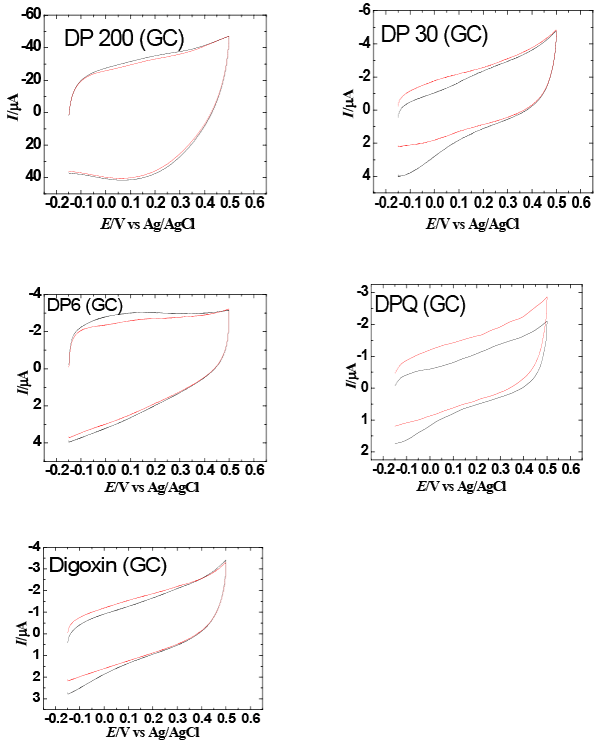 |
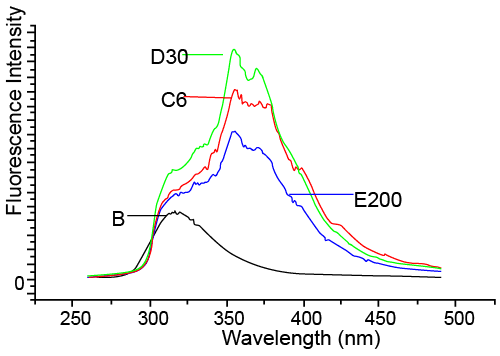 |
| Figure 4 | Figure 5 | Figure 6 |
Relevant Topics
- Acupuncture Therapy
- Advances in Naturopathic Treatment
- African Traditional Medicine
- Australian Traditional Medicine
- Chinese Acupuncture
- Chinese Medicine
- Clinical Naturopathic Medicine
- Clinical Naturopathy
- Herbal Medicines
- Holistic Cancer Treatment
- Holistic health
- Holistic Nutrition
- Homeopathic Medicine
- Homeopathic Remedies
- Japanese Traditional Medicine
- Korean Traditional Medicine
- Natural Remedies
- Naturopathic Medicine
- Naturopathic Practioner Communications
- Naturopathy
- Naturopathy Clinic Management
- Traditional Asian Medicine
- Traditional medicine
- Traditional Plant Medicine
- UK naturopathy
Recommended Journals
Article Tools
Article Usage
- Total views: 14161
- [From(publication date):
September-2013 - Nov 21, 2024] - Breakdown by view type
- HTML page views : 9748
- PDF downloads : 4413
